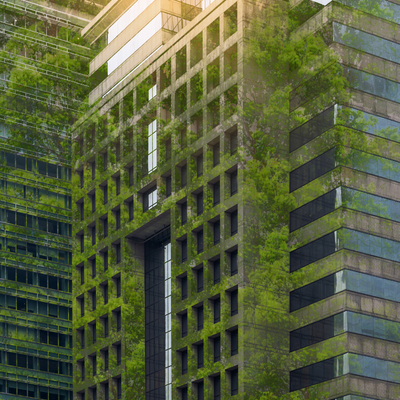As our planet continues to face environmental challenges, it’s become increasingly important to embrace sustainable practices in all aspects of our lives, including construction and architecture.
Sustainable buildings, also known as “green buildings,” are designed to be environmentally responsible and resource-efficient throughout their lifecycle, from construction to decommissioning.
But what precisely are sustainable buildings, and how do they vary from typical building methods?
What Are Sustainable Buildings?
Sustainable buildings are structures that are designed, built, and operated with the environment and our planet’s limited resources in mind. They are designed to have a low environmental effect, improve energy efficiency, and provide a healthy indoor atmosphere for the people who live in them.
Key Characteristics of Sustainable Buildings
- Energy efficiency
- Water conservation
- Use of environmentally friendly materials
Passive solar architecture, efficient lighting and heating systems, and other energy-saving measures are used in sustainable buildings to reduce energy usage.
They are intended to reduce water use and the stress on local water supplies by utilising rainwater collecting, low-flow toilets, and other water-saving technologies.
Sustainable buildings are built with renewable, recycled, or locally obtained resources to minimise their carbon footprint and environmental impact.
Benefits of Sustainable Buildings
Sustainable buildings provide numerous benefits, ranging from increased energy efficiency and cost savings to enhanced indoor air quality and less environmental impact. Some of the most notable advantages of sustainable buildings are:
Energy Savings
Sustainable buildings can drastically lower energy bills and create a more inexpensive and eco-friendly living or working area by minimising energy usage and utilising renewable energy sources.
Improved Indoor Air Quality
Sustainable buildings are built with air quality in mind, employing materials that don’t produce dangerous chemicals and incorporating elements like sufficient ventilation to ensure that the indoor air quality is beneficial for the people who occupy the space.
Reduced Environmental Impact
Sustainable buildings assist in lessening their environmental impact and creating a more sustainable future for our world by lowering energy usage and using ecologically friendly materials.
Materials Used in Sustainable Buildings
To be ecologically friendly and resource-efficient, sustainable buildings use a variety of materials. The following are some of the most widely used materials in sustainable buildings:
Bamboo
Bamboo is a fast-growing and renewable resource that is becoming increasingly popular in the construction of environmentally friendly structures. Bamboo is a robust, durable material with great insulating capabilities, making it an excellent choice for floors, walls, and ceilings.
Cross-Laminated Timber (CLT)
CLT is a form of engineered wood product manufactured by glueing together layers of wood. CLT is a renewable and ecological alternative to typical building materials like steel and concrete, and it has great insulation and fire resistance features.
Cardboard
Cardboard is a renewable and sustainable building material that may be utilised in a variety of ways. It’s constructed of recycled paper, is easily recyclable, and has great insulating capabilities. Cardboard can be used as a more environmentally friendly alternative to standard insulation materials like fibreglass.
Conclusion
Sustainable buildings are critical for a greener, more environmentally friendly future. They are intended to decrease waste, conserve energy, and have a low environmental impact. Businesses may lead the way in building a more sustainable future for generations to come by embracing sustainable construction processes and materials.
